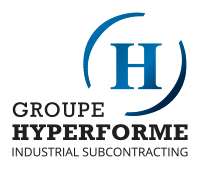Building a profitable client portfolio is a particularly daunting task which is often complicated by the highly competitive environment in which current companies operate, but also by certain business practices. In the industrial subcontracting sector, one of these bad habits related to a company’s profitability is systematically granting discounts in the aim of increasing sales. If that’s one of your practices, it’s time to stop!
The trap of the first sale that brings in bigger ones
This is a classic scenario that you’ve surely already experienced if you’re in sales. In short, the representative approaches a major prospect, negotiates with them, and is about to conclude. But he faces a final objection from the client: the price. Quite often, promising a high order volume or a long-term agreement, the prospect demands a discount. Afraid of losing the sale, the vendor then tells himself that making a small concession on the price of the first order will allow him not only to land a “big” client, but that he’ll also be able to raise the price on the subsequent orders based on the client’s satisfaction.
Why such an approach is dangerous for your profits
In most cases, considering the potential volume of future sales, the vendor validates the sale… at a reduced rate. In so doing, he falls into one of the most common traps, but also one of the costliest for his company’s profits. Since, contrary to the big hopes that this type of sale can stir up, it rarely winds up as expected by the vendor.
Indeed, adopting such a price reduction strategy merely predisposes the beneficiary to take advantage of it over the long term. Just put yourself in the client’s shoes. Why would they now pay more for the same product or service after having gotten it for a lower price? Just to please you? Of course not. Moreover, in most cases, for fear of losing this new client, sales representatives don’t even dare to bring up an increase – however necessary – to the agreed rate.
Two cases then present themselves: either the vendor keeps quiet and holds onto the client, permanently sacrificing some of the company’s profits in the process, or he ends the sale but loses, in addition to the favour granted on the initial order, a client who could have been handled differently. In both cases, the company loses.
The importance of generating sales opportunities to protect your interests
One of the main causes of this type of sale “at any price” is the fact that the subcontractor (or their vendor) considers the client they’re dealing with as their last chance to make a sale. Indeed, when you only have one client, you naturally have a little trouble letting them go. To avoid finding yourself in such moments of weakness where the balance of power is clearly against you, build up your portfolio of prospects as much as possible.
You can do this simply by entrusting this task to Groupe Hyperforme. A Québec-based group with an international dimension specializing in industrial subcontracting, we help you take advantage of an exceptional network of contacts, thereby facilitating your business development activities in this sector. Thanks to our expertise in this field, we also help you highlight your business in order to guarantee you collaborations that are profitable from every point of view.
In addition, keep in mind that the price can be determined and justified by many related elements that we tend to put aside. In this context, we recommend our article entitled “4 secrets to selling based on your added value instead of the price.”














